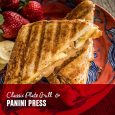How Much Sugar Should I Eat? Insight Into the Recommended Sugar Intake Per Day
The average person consumes far more sugar than the human body is intended to eat.The World Health Organization is stepping up to educate individuals about the dangers of eating too much sugar.They are arming individuals with information about exactly how much sugar they should be consuming in the average day.
One of the things that most people do not realize is that while you might think that sugar gives you energy, it in fact can cause you to have the opposite issue….feeling sluggish and tired.Added sugars in foods can also lead to serious problems like obesity and diabetes.
The Big Problem With Too Much Sugar
sThere are a wide range of problems with sugar.One of the things that people do not realize is that they do not have energy balance when they are eating too much sugar.This leads to them having a hard time maintaining a healthy weight.It can also make it harder for them to get the nutritional intake that their body needs.
Optimal Sugar Intake
Each day your body is going to get some sugar from natural foods.The healthiest thing to do is to make sure that you are not consuming anything but natural sugars.These would be sugar in its pure form and sugars from fruits and some vegetables.In reality this is probably not likely to happen.In fact there are a wide range of hidden sugars in foods that can really affect the amount of sugar that you have in your daily diet.
Most adults consume over 76 grams of sugar in a day.This is more than double the optimal intake of sugar that you should eat.Men should eat no more than 37.5 grams of sugar.Women should eat no more than 25 grams of sugar.This means that if you are a woman eating more than 76 grams of sugar in a day, then you are actually eating more than three times the amount of sugar that you should be.The scary fact is that with this level of sugar intake, you are actually consuming more than 60 pounds of sugar in a year.
What Happens When You Consume Too Much Sugar?
When you are talking about optimal sugar intake, it is important to discuss why it is not healthy to have more sugar than that in your diet.There are many things that happens to your body when you eat too much sugar.The two most common problems that many people suffer with are obesity and type II diabetes.There are others though that many people are not even aware of.Tooth decay is more progressive with a diet that is high in sugar.Non-alcoholic fatty liver disease is another major concern if you are eating too much sugar.Plus, you have a greater risk of having certain types of cancer.
What Can You Do?
There are many things that you can do in order to optimize your health and decrease your chances of these serious issues.The first is that you can start trying to consume only natural sugars.When sugars are present in fruits and vegetables, they are able to be processed in your body differently because they contain micronutrients, fiber, and water.However, when you are consuming added sugars there are none of these included.This means that the body does not process them in the same way.Don’t worry though, cutting out just a few of the sugar filled snacks or drinks in your life can make a huge impact over time.
Know Your Facts: How to Check Labels for Sugar – And What to Look Out For
The American Diabetics Association and Mayo Clinic are spreading the word about how to read labels.Most people are not educated in labels and only know to look for a few things.These include the number of calories and fats.However, there are many hidden dangers that can be found when you start to read the labels and understand just where those flavors are coming from.In fact, many “low fat” or “healthier” foods are pumped full of added sugar to make them taste better.
Understanding Carbohydrates On Labels
When you are reading labels and trying to identify the sugars in your foods, there are many things that can really help you.The first is to check out the total amount of carbohydrates.This will include all of the fiber, complex carbohydrates and sugar that are contained in a food.All types of carbohydrates affect the blood glucose levels.Most people just look at the grams of sugar when counting sugar, but they should be looking at the total grams of carbohydrates.When people only count the sugar grams, they often end up overeating grains that have too many carbohydrates in them and not enough low fat dairy and fruit that seem to have too much sugar in them.
What About Fiber?
One thing that you can look for on labels is foods that have higher grams of fiber.According to the American Diabetics Association, most adults only consume half of the total grams of fiber that they should in a day.Adult women should consume at least 25 grams of fiber and men should consume at least 38 grams of fiber.When reading labels for carbohydrates, it is important to read the grams of fiber that are in each food as well.
Hidden Dangers On Labels
One of the things that is a hidden danger is foods that are labeled as being sugar free.Many of these contain sugar alcohols to make them taste like they contain sugar.While this is not something that will affect your blood glucose, the amount of carbohydrates that the food has will.This means that if you are eating something that is sugar free, it is still important to look at the number of grams of carbohydrates and to understand how these foods are processed in the body.
Some Basic Tips For Reading Labels
With so much information, it can be easier to understand when you break down labels with a few helpful tips.The Mayo Clinic provides a comprehensive list of tips for those who have been diagnosed with diabetes.By taking a look at these, you can learn how to eat sugar in a healthy and manageable way.
- Look for Healthy Ingredients – As you check out labels, look for the things that are healthy for you like monounsaturated fats, whole wheat flour, oats, and soy.
- Try to Avoid Products with Unhealthy Ingredients – Saturated fats and things like partially hydrogenated oil or hydrogenated oils are not foods that you should consume.
- Remember to Look at Total Carbohydrates –As you read labels, remember to look at the total amount of carbohydrates and not just the amount of sugar that they contain.
- Find Foods that are High in Fiber – You should choose foods that are high in fiber.
- Check Labels for Sugar Free Foods – Some sugar free foods are high in carbohydrates, others contain sugar alcohols, and some actually have sugar in the foods but there are no additional sugars added.
Reading labels can help you to understand what foods are going to fit into your new healthy lifestyle and which ones you should be avoiding.This does not mean that you can never have your favorite sweet treat, but it does mean that you should only consume that treat in moderation and that you should be watching your sugar and carbohydrate intake throughout the day when you do.
The Good and the Bad – Insight Into Different Types of Sugars
Did you know that there are actually two types of sugars?Most people think that all sugar is bad sugar but in fact there are actually both good sugars and bad sugars.This is very important to know about when you are trying to achieve optimal health benefits.Good sugars are the ones that you want to be eating!
Another way of looking at good sugars is that they are sugars that are naturally found in foods.Bad sugars are those that are added to foods.When you are eating sugars that are naturally found in foods there are lots of other things in the food as well like fiber, water, vitamins, and minerals.These are all things that are not commonly found in foods that are processed and have added sugars.In fact, many added sugars are put in place to change the flavors of the foods that are chemically enhanced.
The Science Behind The Different Types Of Sugar – Why Good Sugars Are Good And Bad Sugars Are Bad
When you are eating there are actually different ways that sugar enters your body in your foods.Both fiber and carbohydrates actually turn to sugar within the body.Many good sugars are complex sugars. These are the sugars that are found in carbohydrates and fiber.They enter the body and breakdown slowly as they go through digestion.This allows the sugar to provide you with energy throughout the day instead of a short lived burst of energy.The bad sugars are considered to be simple sugars.As these go through the body, you get short lived bursts of energy that do not last long.There are some simple sugars that are not bad but all bad sugars are simple sugars.This can be a little confusing but basically if you are consuming a simple sugar that is natural and has not been processed then it is likely to be a good simple sugar.This includes things like agave and honey.
A Look At Some Common Good And Bad Sugars
Bad sugars can really lead to a lot of health risks and complications when you consume too many.Most people consume a lot of bad sugars through things like soft drinks and even sports drinks that might seem like they are heathy.These are pretty popular in many people’s diets and really are terrible for their health and their body.One thing to consider is reading labels.If you are going to drink a soft drink, opt for one that contains pure cane sugar instead of corn syrup.While these are still not healthy, they are much better for you than the alternative.
Good sugars are found in fruits and vegetables.They are naturally occurring and plant based.These sugars break down easily and quickly in the body.They are a great way to still have some sweet treats in your diet without adding too many calories or dangerous bad sugar to your diet.If you are really craving something sweet consider making a healthy smoothie with frozen berries, fresh leafy greens and water.If you need to sweeten it a little, add a little agave nectar.You can also take berries and dip them in dark chocolate.Remember when choosing a chocolate, the higher the percentage of cocoa, the healthier that it is.











